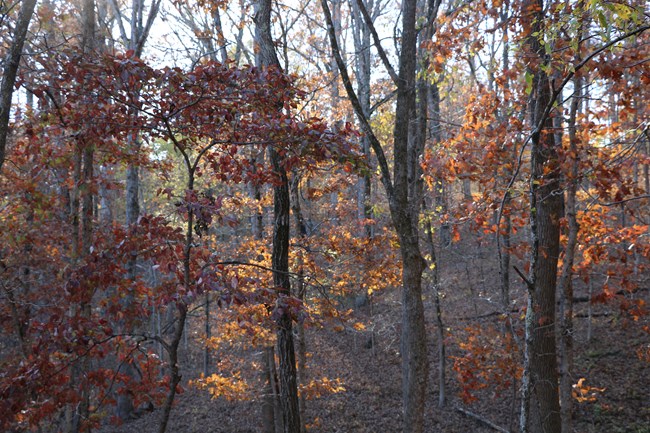| Pine, Cedar |
Shortleaf Pine (Pinus echinata) |
V |
| |
Ashe Juniper (Juniperus ashei) |
B |
| |
Eastern Red Cedar (Juniperus virginiana) |
V |
| Willow |
Eastern Cottonwood (Populus deltoides) |
S |
| |
Black Willow (Salix nigra) |
S |
| Walnut, Birch |
Shagbark Hickory (Carya ovata) |
M |
| |
Black Hickory (Carya texana) |
V |
| |
Mockernut Hickory (Carya tomentosa) |
V |
| |
Black Walnut (Juglans nigra) |
V |
| |
River Birch (Betula nigra) |
S |
| |
Ironwood (Carpinus caroliniana) |
S, M |
| Beech, Oaks |
Ozark Chinquapin (Castanea pumila var. ozarkensis) |
V |
| |
Beech (Fagus grandifolia) |
S, M |
| |
White Oak (Quercus alba) |
V |
| |
Chinkapin Oak (Quercus muehlenbergii) |
V |
| |
Post Oak (Quercus stellata var. stellata) |
V |
| |
Southern Red Oak (Quercus falcate var. falcata) |
V |
| |
Blackjack Oak (Quercus marilandica) |
B |
| |
Northern Red Oak (Quercus rubra) |
M, S |
| |
Black Oak (Quercus velutina) |
V |
| Elm, Mulberry, Magnolia |
Sugarberry (Celtis laevigata) |
V |
| |
Hackberry (Celtis occidentalis) |
V |
| |
Winged Elm (Ulmus alata) |
V |
| |
American Elm (Ulmus americana) |
M |
| |
Slippery Elm (Ulmus rubra) |
V |
| |
Osage Orange (Maclura pomifera) |
V |
| |
Red Mulberry (Morus rubra) |
M |
| |
Umbrella Magnolia (Magnolia tripetala) |
M |
| Custard Apple, Laurel |
Pawpaw (Asimina triloba) |
M, S |
| |
Sassafras (Sassafras albidum) |
O |
| Witch Hazel, Plane Tree |
Common Witch Hazel (Hamamelis virginiana) |
S, M |
| |
Sweetgum (Liquidambar styraciflua) |
V |
| |
Sycamore (Platanus occidentalis) |
V |
| Willow |
Serviceberry/Sarvis (Amelanchier arborea) |
V |
| |
Cockspur Hawthorn (Crataegus crus-galli) |
W, O |
| |
Chickasaw Plum (Prunus angustifolia) |
W, O |
| |
Big Tree Plum (Prunus mexicana) |
W |
| |
Black Cherry (Prunus serotina) |
V |
| Pea |
Redbud (Cercis canadensis) |
V |
| |
Honey Locust (Gleditsia triancanthos) |
V |
| |
Black Locust (Robinia pseudo-acacia) |
V |
| Cashew |
Smooth Sumac (Rhus glabra) |
V |
| Maple |
Box Elder (Acer negundo) |
L |
| |
Red Maple (Acer rubrum var. rubrum) |
L |
| |
Sugar Maple (Acer saccharum) |
M |
| Linden, Dogwood |
American Basswood (Tilia americana) |
S |
| |
Rough-Leaved Dogwood (Cornus drummondii) |
V |
| |
Flowering Dogwood (Cornus florida) |
V |
| Tupelo, Ebony |
Black Gum (Nyssa sylvatica var. sylvatica) |
V |
| |
Persimmon (Diospyros virginiana) |
O |
| Ash |
White Ash (Fraxinus americana) |
M |
| |
Blue Ash (Fraxinus quadrangualta) |
S, B |
| Invasive/Non-Native |
Mimosa/Silk Tree (Albizia julibrissin) |
V |
| |
Tree of Heaven (Ailanthus altissima) |
V |

